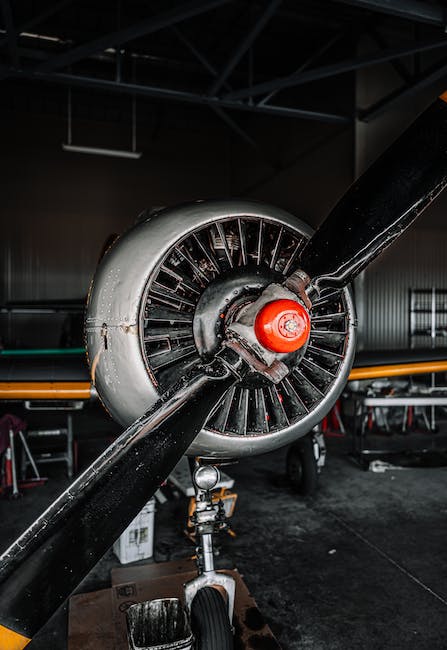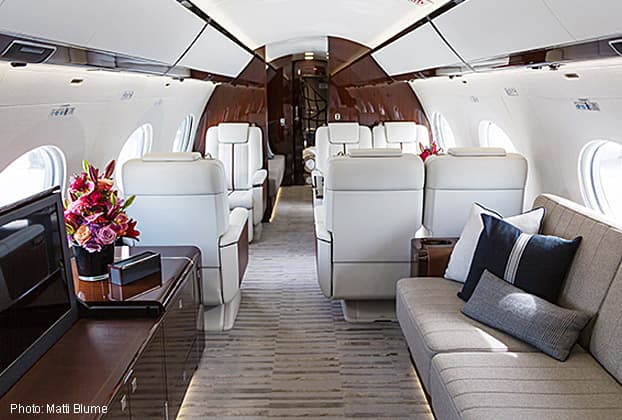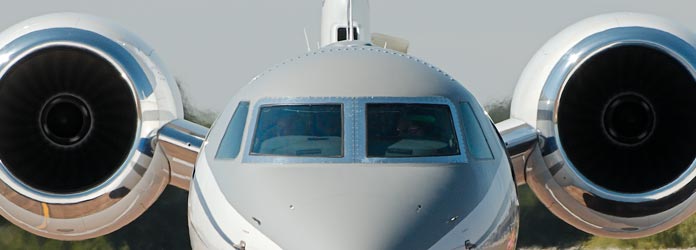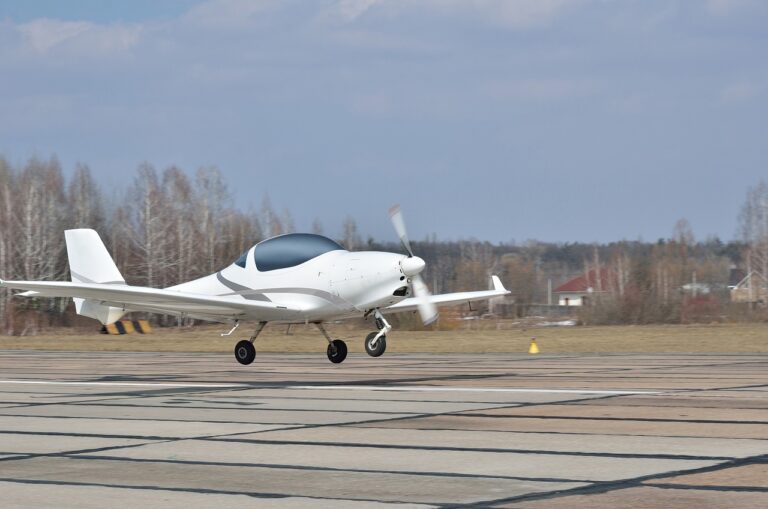What Are the Best Practices for Cost-Effective Private Jet Travel
Flying has always held a sense of wonder and excitement, but it’s no secret that soaring through the sky in a private jet brings unparalleled luxury and convenience. Surprisingly, this high-end experience need not be solely reserved for the world’s elite. In this article, we dive straight into the realm of cost-effective private jet travel, uncovering tried-and-true practices that allow astute travelers to access the exclusive world of private aviation without burning a hole in their wallets. Let’s explore the options and uncover the secrets that make private jet travel a financially viable choice for those who crave the perks of luxury in the skies.
Table of Contents
- Choosing the Right Private Jet for Cost-Effective Travel
- Making the Most of Empty Leg Flights: A Smart Cost-Saving Strategy
- Effective Budgeting: Tips for Minimizing Private Jet Expenses
- The Importance of Flight Planning and Optimization for Cost Efficiency
- Maximizing Membership Programs: Unlocking the Benefits of Private Jet Clubs
- The Future of Private Jet Travel: Exploring Sustainable and Economical Options
- FAQs
- The Conclusion

Choosing the Right Private Jet for Cost-Effective Travel
When it comes to private jet travel, finding the perfect option that aligns with your budget can be a challenging task. However, with careful consideration and a bit of knowledge, you can make a cost-effective choice without compromising on comfort or luxury. Here are a few factors to keep in mind when choosing the right private jet:
- Seating Capacity: Determine the number of passengers you will be traveling with. Opting for a jet that perfectly accommodates your group size ensures maximum cost-efficiency by avoiding wasted space and unnecessary expenses.
- Range: Consider the distance you intend to cover during your journey. A jet with a longer range can minimize fuel stops or the need for layovers, saving you valuable time and additional costs.
- Amenities: Evaluate the amenities provided on board. While it’s essential to select a private jet that offers the desired level of comfort, it’s equally important to avoid extravagant features that may inflate the overall cost.
Continued below…
Continuing from the previous section, here are additional factors to consider:
- Crew Experience: The competence and experience of the crew can significantly impact your travel experience. Choose an aircraft operated by a reputable company with well-trained personnel, ensuring safety and efficiency throughout your journey.
- Maintenance: Look into the aircraft’s maintenance records and ensure it has been diligently serviced and well-maintained. This guarantees a smooth and worry-free flight, minimizing the chances of unforeseen expenses or delays.
- Flexibility: Consider whether the private jet offers flexibility in terms of scheduling. It’s essential to ensure that the chosen aircraft can adapt to any changes in your travel plans, providing a seamless and stress-free experience without incurring additional costs.
By carefully evaluating these factors, you can select the right private jet that meets your cost-effective travel needs, allowing you to enjoy a luxurious and hassle-free journey without breaking the bank.
Making the Most of Empty Leg Flights: A Smart Cost-Saving Strategy
Empty leg flights are a hidden gem in the world of aviation, offering an excellent opportunity for savvy travelers to maximize their savings. By understanding how to make the most of these flights, you can embark on an unforgettable journey while keeping your expenses in check.
One smart strategy to capitalize on empty leg flights is to be flexible with your travel dates and destinations. Since these flights are often the result of repositioning an aircraft, they are subject to last-minute changes. By remaining open to various departure times and locations, you increase your chances of finding the perfect empty leg flight that aligns with your travel plans. Keep an eye out for popular routes, as they are more likely to have available empty leg opportunities.
Another way to optimize your savings is by sharing the empty leg flight with a group of like-minded travelers. By teaming up with friends, family, or fellow adventurers, you can divide the cost of the flight between multiple individuals, significantly reducing each person’s expenses. Imagine jetting off to your dream destination with your favorite people, all while taking advantage of this cost-saving strategy! Make sure to do your research and collaborate with reliable individuals who are committed to the shared journey.

Effective Budgeting: Tips for Minimizing Private Jet Expenses
Private jet travel is often associated with lavish expenses, but with effective budgeting, you can minimize those costs without compromising on convenience or luxury. Here are some tips to help you make the most out of your private jet experience while keeping your expenses in check:
1. Plan in advance: By booking your private jet well in advance, you can take advantage of lower prices and discounts. This allows you to secure the best deals and ensure that your preferred aircraft is available.
2. Choose for secondary airports: Consider using smaller, secondary airports instead of major hubs. These airports often have lower landing fees and offer more competitive pricing for private jet services. Plus, they are less crowded, resulting in a smoother and hassle-free travel experience.
3. Fly empty legs: Empty legs refer to the repositioning flights of private jets that are empty after dropping off passengers. Chartering an empty leg can be a cost-effective way to enjoy private jet travel, as these flights are usually available at significantly discounted rates.
4. Share the costs: Consider sharing the private jet with others who are traveling to the same destination or have similar itineraries. This way, you can split the expenses and reduce the financial burden while still savoring the exclusivity of private flight.
5. Optimize your itinerary: Minimize the number of stops and unnecessary layovers on your journey. Opting for direct flights or routes with fewer stops not only saves time but also reduces expenses associated with landing fees and additional crew charges.
By following these tips, you can effectively manage your private jet expenses and make your travel experience more affordable without sacrificing comfort and convenience. Remember, budgeting doesn’t mean compromising quality; it means finding smart and cost-efficient ways to fulfill your private jet travel dreams.

The Importance of Flight Planning and Optimization for Cost Efficiency
Flight planning and optimization play a crucial role in achieving cost efficiency for airlines. By carefully considering factors such as fuel consumption, wind patterns, and aircraft performance, airlines can minimize expenses and maximize profitability. Here are some key reasons why flight planning and optimization are of paramount importance:
1. Fuel Consumption Reduction: One of the most significant expenses for airlines is fuel. By undertaking meticulous flight planning and optimizing routes, airlines can reduce fuel consumption, resulting in substantial cost savings. This involves analyzing weather conditions, wind patterns, and air traffic congestion to determine the most fuel-efficient routes. Additionally, airlines can consider factors such as aircraft weight, altitude optimization, and efficient climb and descent profiles to further minimize fuel consumption.
2. Time and Distance Optimization: Proper flight planning and optimization can help airlines reduce both flight duration and distance traveled. By utilizing advanced navigation systems and taking advantage of favorable winds, airlines can cut down on flight time and minimize the wear and tear on aircraft, thus reducing maintenance costs. Moreover, optimizing flight routes can result in shorter distances traveled, leading to lower fuel consumption, increased efficiency, and decreased carbon emissions.
3. Improving On-Time Performance: Efficient flight planning contributes to improved on-time performance. By considering factors such as air traffic congestion, weather patterns, and airport slot availability, airlines can better anticipate potential delays and modify flight plans accordingly. This proactive approach helps minimize disruptions, ensures punctuality, and enhances customer satisfaction.
4. Aircraft Utilization Optimization: Flight planning and optimization also involve considering aircraft utilization. By carefully scheduling flights and matching aircraft capacity to passenger demand, airlines can optimize resource allocation and reduce operating costs. This includes determining the most profitable routes, identifying high-demand periods, and strategically positioning aircraft based on market trends.
In conclusion, flight planning and optimization significantly impact cost efficiency for airlines. By reducing fuel consumption, optimizing time and distance, improving on-time performance, and maximizing aircraft utilization, airlines can achieve substantial cost savings. Therefore, investing in advanced flight planning and optimization techniques is critical for airlines striving to improve their financial performance and deliver enhanced services to passengers.

Maximizing Membership Programs: Unlocking the Benefits of Private Jet Clubs
Private jet clubs offer an extraordinary opportunity for individuals to reap unparalleled benefits and elevate their travel experience to new heights. By becoming a member of these exclusive clubs, individuals gain access to a world of luxury, convenience, and flexibility that is simply incomparable. One of the most enticing aspects of membership programs is the ability to unlock a plethora of benefits and privileges that cater to the unique needs and preferences of each member.
Membership in private jet clubs goes far beyond just reserving a private aircraft; it extends to a realm that encompasses a wide range of advantages. Whether it’s priority access to premium airport lounges or expedited security screenings, members are treated to a seamless and stress-free travel experience like no other. Furthermore, private jet clubs offer their esteemed members the freedom to customize their trips according to their desires. Whether it’s choosing the aircraft type, departure time, or even the in-flight menu, members have the power to shape every facet of their journey. With a variety of membership tiers available, individuals can select the option that best aligns with their travel frequency and desired level of service.
In addition to the privilege of accessing a VIP network of airports and lounges, private jet clubs provide members with countless other perks to enhance their overall satisfaction. With personalized concierge services, members can effortlessly handle all aspects of their trip, from ground transportation arrangements to hotel reservations. Furthermore, these clubs often offer discounted rates on additional flights and upgrades, ensuring that members receive unmatched value for their investment. Whether it’s for frequent business travel, family vacations, or spontaneous getaways, private jet clubs hold the key to unlocking unparalleled luxury and convenience for their fortunate members.

The Future of Private Jet Travel: Exploring Sustainable and Economical Options
As the world progresses towards a more sustainable future, the private jet travel industry is also evolving to align with these goals. Carrying with it a reputation for luxury and opulence, private jets are breaking free from their conventional image and embracing environmentally friendly and cost-effective options.
With the advent of technological advancements, sustainable private jet solutions are paving the way for a greener mode of travel. Innovations such as electric or hybrid-powered jets are on the horizon, providing a cleaner alternative to traditional fuel-guzzling aircraft. These eco-conscious options not only reduce carbon emissions but also offer lower operating costs, making private jet travel more economical than ever.
FAQs
Q: What are the best practices for cost-effective private jet travel?
A: Here are the key tips and tricks to make your private jet travel affordable:
1. Can I share a private jet with others?
Cost-effective private jet travel requires careful planning and consideration of various factors. While private jet travel is generally more expensive than commercial flights, there are ways to optimize your expenses without compromising on comfort and convenience. Here are some best practices:
- Choose the Right Aircraft: Different private jets have varying capacities, ranges, and amenities. Choose an aircraft that suits your needs without being overly extravagant. Smaller jets can often be more cost-effective for shorter trips with fewer passengers.
- Empty Leg Flights: These are flights where the aircraft is returning to its base or repositioning after dropping off passengers. Since these flights are essentially “empty,” operators may offer them at a significantly reduced cost, sometimes up to 75% less than regular charter rates. Keep in mind that these flights are subject to availability and might not always align with your travel schedule.
- Membership Programs and Jet Cards: Some companies offer membership programs or jet cards that allow you to purchase a set number of flight hours in advance. These can provide cost savings compared to booking individual flights. However, carefully review the terms and conditions to ensure they fit your travel patterns.
- Charter Brokers: Using a reputable charter broker can help you find the best deals. Brokers have access to a wide network of operators and can help you identify cost-effective options that meet your requirements.
- Compare Quotes: Don’t settle for the first quote you receive. Reach out to multiple operators or brokers to compare prices for the same route and aircraft type. This can help you identify the most competitive rates.
- Consider Nearby Airports: Private jets can often access smaller, more conveniently located airports that commercial airlines can’t. Choosing a nearby airport can save you time and money on ground transportation.
- Optimize Passenger Count: The number of passengers affects the choice of aircraft. Traveling with a smaller group might allow you to choose a more cost-effective, smaller jet.
- Flexible Travel Dates: If your schedule allows, consider being flexible with your travel dates. Like airlines, private jet prices can vary based on demand.
- Avoid Peak Travel Times: Peak travel seasons and holidays can drive up private jet prices. If possible, schedule your trips during off-peak times.
- Avoid Extra Fees: Clarify upfront what’s included in the quoted price. Some operators might charge extra for services like catering, ground transportation, and overnight fees for the flight crew.
- Share Flights: If you’re open to sharing the aircraft with others (who may be strangers), you can explore options like “crowdsourced” flights. These services connect travelers with available seats on private jets, reducing costs for everyone.
- Avoid Extra Stops: Each additional stop can increase the cost of the flight due to landing fees, crew expenses, and potential delays.
- Fuel Efficiency: Some newer private jets are more fuel-efficient, which can lead to cost savings. Consider this factor when choosing an aircraft.
- Negotiate Wisely: When dealing with charter operators or brokers, don’t be afraid to negotiate. They might be willing to offer discounts to secure your business.
2. How can I save on empty leg flights?
Empty leg flights occur when a private jet returns empty after dropping off passengers. Keep an eye out for these discounted flights, which can be up to 75% cheaper than regular fares.
3. Are there ways to minimize landing and handling fees?
Yes! Choose smaller airports whenever possible, as they tend to have lower fees compared to busy hubs. It’s a win-win: less congested and more cost-effective.
4. Is it better to buy jet cards or join a membership?
It depends on your travel frequency. Jet cards offer fixed-hour packages, suitable for occasional flyers. If you fly frequently, membership programs provide better value and exclusive benefits.
5. Should I purchase a fractional ownership or lease a private jet?
Fractional ownership is ideal for those who fly consistently but don’t need an entire aircraft. Leasing is a better option if you require more flexibility, with no long-term commitment.
6. Can I negotiate prices with private jet charter providers?
Yes, indeed! Don’t hesitate to negotiate the price or ask about discounted options. You might be surprised by the deals you can score.
7. How can I avoid unexpected costs?
Clear communication is key. Confirm all the costs upfront, including fuel surcharges, catering fees, and overnight fees. Understanding these expenses beforehand can prevent surprises.
8. What about empty seats on privately chartered flights?
Opt for “deadhead flights” where you can enjoy additional savings by filling up their empty seats. It’s a budget-friendly choice for those willing to be flexible.
9. Are there alternative affordable options to private jet travel?
Yes, consider jet card membership programs, which offer access to private jet travel without the commitment of buying or leasing an aircraft. It’s like having a prepaid account for discounted flights.
10. Do online platforms offer cheaper private jet options?
Absolutely! Check out various online platforms and apps that connect you with private jet operators. These platforms often provide competitive pricing and additional perks.
Remember, by implementing these cost-effective practices, private jet travel can become more attainable for those seeking luxury with a budget-conscious mindset. Safe travels!
Future Outlook
In conclusion, when it comes to cost-effective private jet travel, it’s important to keep a few best practices in mind. By planning your trips in advance, comparing different operators, and considering membership programs or shared flights, you can significantly cut down on expenses. Additionally, being flexible with your travel dates and destinations can help you find better deals and discounts. Remember to keep an eye out for hidden fees and unnecessary expenses, and always negotiate and communicate your needs to get the best possible deal. With these tips, you can enjoy the luxurious comfort of private jet travel without breaking the bank. Happy flying!







